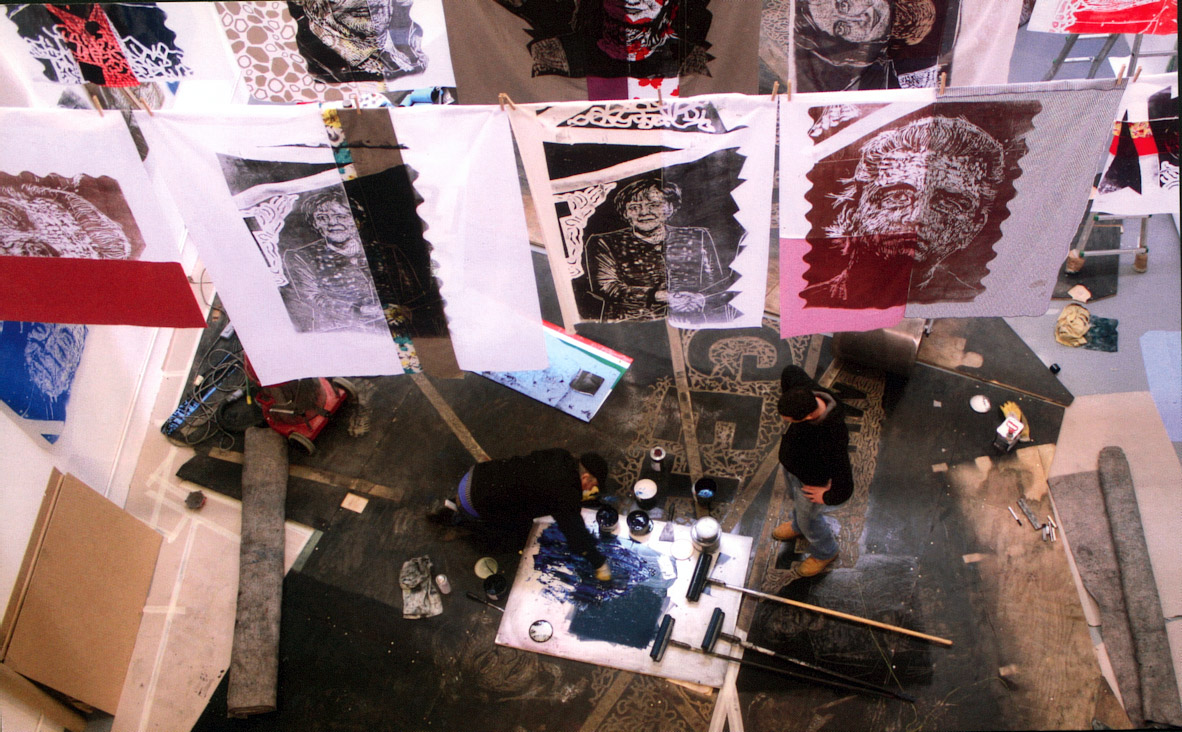Galerie Nagel Draxler, Cologne, 2020

29/02/2020—10/04/2020
Opening: Friday, 28 February, 6–9pm
Galerie Nagel Draxler
Elisenstraße 4–6
50667 Köln
Hours:
Wednesday – Friday 11am–6pm
Saturday 11am–4pm
Already in 1997, as a master student of Georg Herold at the Städelschule in Frankfurt, Kilpper made a woodcut from the parquet floor of the former Soviet military mission in Frankfurt am Main-Niederrad, that was planned to be demolished. This was followed in 1998 by his project don´t look back in the former US Army Camp King in Oberursel, where he covered the entire wooden parquet of the former basketball hall with motifs, that critically referred the venue’s history. Then in 2000 with The Ring, Kilpper carved a 400 square meters woodcut into the mahogany parquet on the 10th floor of the traditional “Orbit House” in Southwark, London. In 2009 Kilpper worked in the deserted Ministry of State Security of the GDR in East Berlin. Under the title State of Control, he cut the history of the institution, that was based on state surveillance and repression, into the 800 square meters PVC floor of the building’s canteen, including numerous portraits of West German protagonists. From the carvings on site Kilpper always took prints on paper or fabric that became installations or single images.
In his exhibition Köln Fragmente Thomas Kilpper now takes a look at the German history of fascination with, and exploitation and persecution of the foreign, using the example of the history of the Rhineland from the post-war period to the present. The solemn greeting of the one millionth migrant worker Armando Rodrigues de Sá on September 10, 1964 by the German workers’ associations is contrasted by the pictures of the striking Ford employees, anti-Turkish newspaper headlines and the racist NSU attacks. Chapters are also dedicated to Cologne as an epicenter of art, the collapse of the city archive and the struggle to preserve the Hambacher Forest. A spectacular, labyrinthine course made of wooden panels, into which the motifs are cut, fills the entire gallery space. These images appear iconographic or like tableau vivants. Their materiality and density make it difficult for the viewer to distance oneself from these subjects.
The birch wood panels, that Kilpper uses, are recycled material from his floor work Traces of War for the exhibition MISSING. The Tower of the Blue Horses, which took place in spring 2017 in Munich’s Pinakothek der Moderne and which thematized the lost painting by Franz Marc, that was once defamed as “degenerated”. Kilpper drove a modern 60-ton Leopard II tank of the Bundeswehr over the wood, so that its chain pattern got imprinted in it, which is contrasted with war-glorifying quotes from Marc’s field letters. For Köln Fragmente Kilpper simply flipped these panels over and reworked them. Their back side is made consciously visible in some parts of the exhibition.




